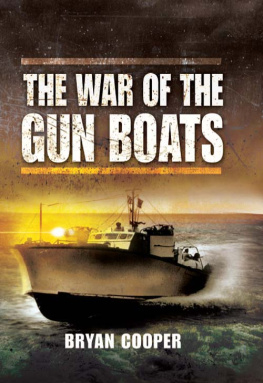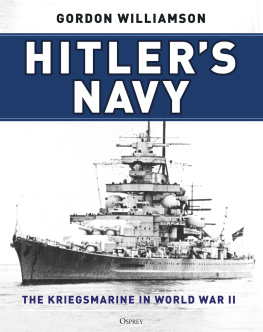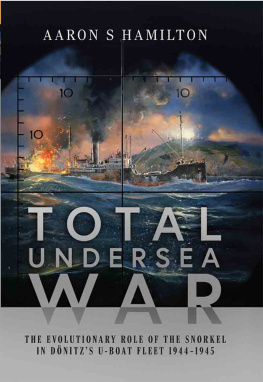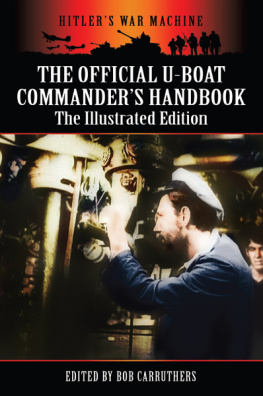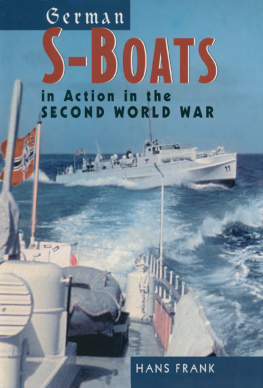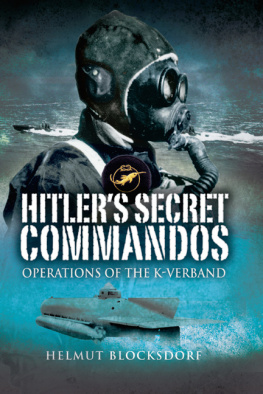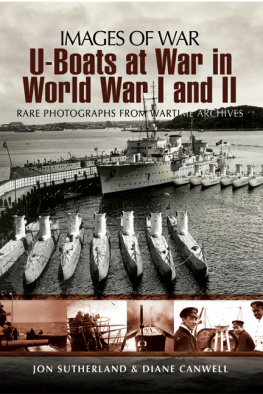
AT CLOSE QUARTERS
PT Boats in the
United States Navy
by
CAPTAIN ROBERT J. BULKLEY, JR.
USNR (Retired)
with a Foreword by
PRESIDENT JOHN F. KENNEDY
and an Introduction by
REAR ADMIRAL ERNEST McNEILL ELLER, USN (Retired)
Director of Naval History
Naval Institute Press
Annapolis, Maryland
This book has been brought to publication by the generous assistance of Marguerite and Gerry Lenfest.
Naval Institute Press
291 Wood Road
Annapolis, MD 21402
Originally printed in 1962 by the Government Printing Office for the Department of the Navy
All rights reserved. No part of this book may be reproduced or utilized in any form or by any means, electronic or mechanical, including photocopying and recording, or by any information storage and retrieval system, without permission in writing from the publisher.
First Naval Institute Press paperback edition, 2003
Library of Congress Cataloging-in-Publication Data
Bulkley, Robert J. (Robert Johns), 19111962.
At close quarters: PT boats in the United States Navy / by Captain Robert J. Bulkley, Jr.; with a foreword by President John F. Kennedy and an introduction by Rear Admiral Ernest McNeill Eller,
p. cm.
Originally published: Washington, D.C.: U.S. Government Printing Office, 1962.
Includes bibliographical references and index.
ISBN 978-1-61251-182-5 (alk. paper)
1. Torpedo boatsUnited StatesHistory20th Century. 2. United StatesHistory, Naval20th Century. 3. World War, 19391945Naval operations, American. I. Title.
V833 .B85 2003
359.32580973dc21
2002041057
PT boats filled an important need in World War II in shallow waters, complementing the achievements of greater ships in greater seas. This need for small, fast, versatile, strongly armed vessels does not wane.
JOHN F. KENNEDY
THE WHITE HOUSE
WASHINGTON
FOREWORD
In the dark days of the American Revolution when the strongest efforts on land seemed always frustrated by British seapower, General Washington said,
In any operation, and under all circumstances, a decisive Naval superiority is to be considered as a fundamental principle, and the basis upon which every hope of success must ultimately depend.
The next year the French fleet defeated the British off the Virginia Capes making possible the victory at Yorktown. Since that day the destiny of our country has been inextricably interwoven with the sea. This was never more true than in the giant World War II that involved all seas and most of mankind. To fight the sea war we needed many types of ships, large and small, from aircraft carriers and battleships to PT boats.
Small though they were, the PT boats played a key role. Like most naval ships, they could carry out numerous tasks with dispatch and versatility. In narrow waters or in-fighting close to land they could deliver a powerful punch with torpedo or gun. On occasion they could lay mines or drop depth charges. They could speed through reefs and shark infested waters to rescue downed pilots or secretly close the shore to make contacts with coast watchers and guerrilla forces. PT boats were an embodiment of John Paul Jones words:
I wish to have no connection with any ship that does not sail fast for I intend to go in harms way.
Naval strength must function from shore to shore and on inland waters where the mobility and flexibility provided by ships can be employed to support land operations. PT boats filled an important need in World War II in shallow waters, complementing the achievements of greater ships in greater seas. This need for small, fast, versatile, strongly armed vessels does not wane. In fact it may increase in these troubled times when operations requiring just these capabilities are the most likely of those which may confront us.
The thorough and competent account herein of over-all PT boat operations in World War II, compiled by Captain Robert Bulkley, a distinguished PT boat commander, should therefore prove of wide interest. The widest use of the sea, integrated fully into our national strength, is as important to America in the age of nuclear power and space travel as in those stirring days of the birth of the Republic.

Introduction
Histories may or may not make men wise. Certainly one of the hopes of the Navy Department in recording them in World War II and since has been that from the recorded facts men would learn for future leadership to serve our beloved nation.
Detailed action reports and war diaries were required from ships and higher commands in World War II. These were not only for clearer analysis that we might better fight the war but were to serve as source material for studies and histories in the future.
To supplement these fundamental building blocks of history, the Navy prepared in manuscript many command and administrative histories. For the most part the commands themselves prepared these histories. Some are outstanding, some are dreary; but all are akin in that they were prepared by participants who had just lived through the events recorded. The writers also had at hand the maximum amount of the commands file material likely ever to be available since most of the never ebbing tide of paperwork must be given the deep six. Therefore they should have captured information on events which is not now discoverable.
These histories were prepared for the record, not for publication. They have served their purpose admirably as a fount of irreplaceable information. We in the Navy turn to them constantly for how it was done in the Tenth Fleet, in the Mediterranean, in the Pacific, in the South Atlanticin the many parts of the world where the complex, many faceted Navy serves America and freedom. Organization, procedures followed, lessons learned as in antisubmarine warfarethese we daily profit by in many parts of the Navy. The manuscripts have also been invaluable to serious civilian historians.
Some of the manuscript histories reached a quality of excellence that merited publication when the need and demand should arise. One of this select group appears in the following pages. This thorough and objective account of the operations of PT boats in the U.S. Navy in World War II was prepared in the year after V-J Day by an officer who served in them through most of the war in the far reaches of the Pacific.
Next page


